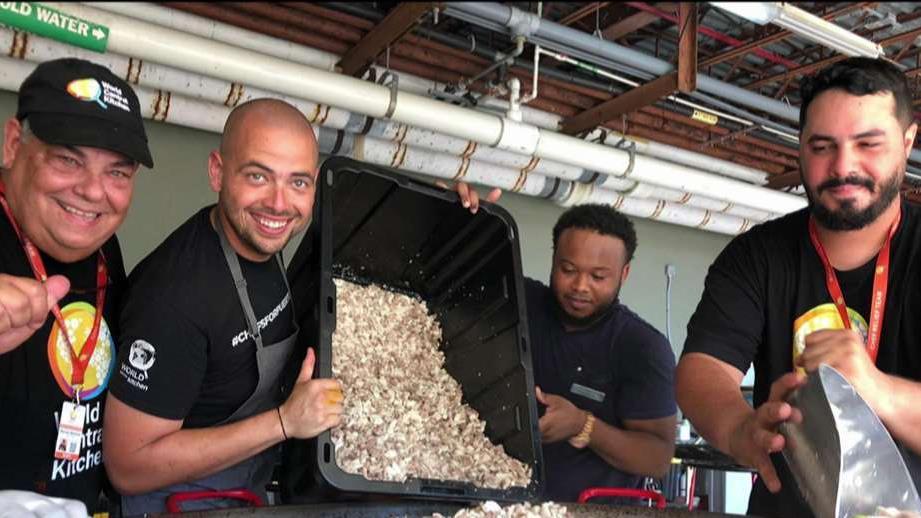Judge: Federal government liable for Harvey flooding
The ruling is part of a test case involving 13 properties
HOUSTON — A federal judge on Tuesday ruled the U.S. Army Corps of Engineers is liable for damages to a group of Houston-area homes and businesses that were flooded by two federally owned reservoirs during Hurricane Harvey because the inundation was due to how the federal government built and maintained the dams.
The ruling by Senior U.S. Judge Charles Lettow on the U.S. Court of Federal Claims in Washington. D.C. is part of a test case involving 13 properties located upstream of the Addicks and Barker reservoirs that were flooded during Harvey in 2017.
Attorneys for the property owners said the Corps of Engineers knew for decades the reservoirs’ capacity would exceed federal land and inundate homes and businesses on adjacent private property.
GET FOX BUSINESS ON THE GO BY CLICKING HERE
Their lawyers say structures upstream of the reservoirs were built in areas known as flood pools, where water collects as the dams fill up. Their attorneys say the federal government doesn't own all the land that encompasses this flood pool and a portion of the flood pool is on private property.
In his 46-page ruling, Lettow wrote that “the flooding that occurred was the direct result of calculated planning.”
THE MOST DESTRUCTIVE HURRICANES ARE HITTING US MORE OFTEN
“Here, the evidence demonstrates the Corps was aware or should have been aware since the initial construction of the dams and at every point onward, that the flood pools in the Addicks and Barker Reservoirs would at some point (and thereafter) exceed the government-owned land, inundating private properties,” Lettow wrote.
The judge’s ruling came after a two-week trial in May in Houston in which more than 30 witnesses testified.
“The government was responsible for creating an emergency, and these citizens were the innocent victims of those calculated decisions. We look forward to pushing the case through the damages phase and achieving justice for the upstream flood victims,” said Daniel Charest, one of the attorneys for the residents and business owners, who are among hundreds of lawsuits filed in connection with flooding from the two reservoirs.
HURRICANE HARVEY: HOMES DESTROYED, OWNERS LEFT WITH FEW OPTIONS
Lettow’s ruling means upstream property owners are eligible to seek certification as a class and move the case to trial to determine damages, Charest said.
An email seeking comment from the U.S. Department of Justice, which represents the Corps of Engineers, was not immediately returned Tuesday night.
During the May trial, William Shapiro, a Justice Department, had argued Harvey was a "historically large rainfall event" that was unprecedented and "flooding in a storm of this size was inevitable.”
MOST AMERICANS THINK STORMS ARE GETTING WORSE, STUDY SAYS
The home and business owners allege the federal government violated the takings clause of the Fifth Amendment, which states private property can't be taken for public use without just compensation.
Harvey, which made landfall as a Category 4 storm on Aug. 25, 2017, killed 68 people and caused an estimated $125 billion in damage in Texas. In the Houston area, Harvey caused 36 deaths and flooded more than 150,000 homes.
CLICK HERE TO READ MORE ON FOX BUSINESS
Around the reservoirs, located about 20 miles (30 kilometers) west of downtown Houston, more than 10,000 properties flooded.
When it doesn't rain, land around the two dams, built more than 70 years ago, is dry, green space with parks. Many residents who flooded said they were unaware their homes were built on land used as a reservoir.
During heavy rainfall events, the dams are closed to collect water from local bayous and creeks and ensure it doesn't flow at an uncontrolled rate downstream to downtown Houston and the Houston Ship Channel.
Houses downstream of the dams also flooded when officials released water after concerns the reservoirs could fail. Homeowners who were flooded downstream have also sued and their lawsuits are being handled separately.
